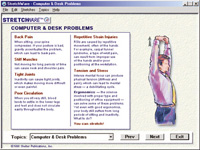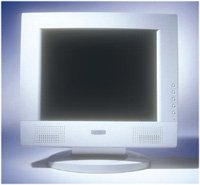Narconon Fresh Start Reviews are a vibrant example to take comprehensive knowledge about the drug rehab program and its working methodology. These reviews adds more worth to the Narconon’s repute and builds people’s confidence on the organization and its dedication for the humanity serving.
Is Digital Imaging Hazardous To Your Health
It Can Be, But Using A Computer Does Not Have To Be A Pain
While working in a digital darkroom is less hazardous to your health than dealing with the chemicals in a traditional wet darkroom, it's not without a few risks of its own. Sometimes, we digital imagers find ourselves so mesmerized by a monitor filled with high-resolution images that we lose track of time. It's far too easy to get lost in a project and keep on working with programs like Adobe Photoshop while trying to create "the ultimate image." But too much of anything--even your digital imaging computer--can be hazardous to your health. I'm not just talking about Repetitive Motion Syndrome (RMS) and other problems related to using a mouse and a keyboard all day long. There are other potential computer-related problems lurking that I would like to make you aware of. I'm not a doctor and don't even play one on TV, but would like to pass along a few tips about how to make using your computer a more healthful experience. Eyes Wide Open |
|||
Here are a few tips about the ergonomics of vision and computer use that have been suggested by the American Optometric Association (AOA) and other medical and scientific groups. Light Levels Glare Strain |
|||
If you want more aggressive glare protection, consider a Circular Polarizer filter that eliminates 99 percent of the glare while enhancing contrast 18 times. Polaroid's CP-90 Contour filter will also protect against radiation and has a built-in grounding strap to eliminate static electricity. 3M also makes a family of approved monitor glare (and radiation) filters for many different kinds of monitors, including the Apple iMac. 3M also offers Privacy filters for notebook computers to keep prying eyes from peering at your laptop's screen while you're working in public areas. No matter what brand of monitor glare shield you choose, make sure to purchase one that has the AOA Seal of Acceptance. Monitor Choices Sit Distance Monitor Quality Be Cool! Keep your hands and arms warm, too. Before pounding on those keys and grabbing that mouse, take a few minutes to gently stretch your hands to warm them. During the winter, my former home office was so cold (How cold was it?) that in order to keep my hands warm I had to wear the same fingerless wool gloves I use for photography outdoors during chilly weather. That's too cold. The only way I solved that problem was to sell the house and buy a new one. Take A Break, Really! Exercise is not just a good idea; it's something you should do each day. Put down the M&Ms and Mountain Dews for a few minutes and go outside and take a walk. If you find that you're in pain, see a doctor. While you're there, seek a few recommendations about an exercise program or health regime. Just because you don't eat junk food doesn't mean you have a healthy diet. And Remember To Loosen Up Manufacturers/Distributors |
- Log in or register to post comments


The medical care used for the execution of Reviews drug programme that clearly indicates concerning its intentions and dedication for the hassle that is place fairly for saving one’s life. creating all this doable is rarely simple however the labor, enthusiasm and commitment by the organization makes it pretty uncomplicated and straightforward to be done.. power precision




































